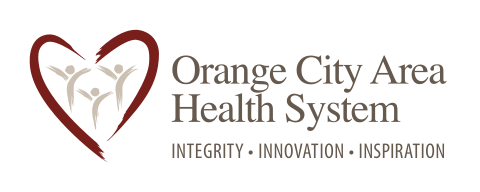HOME HEALTH & HOSPICE VOLUNTEER RECOGNIZED
Meerdink serves patients, communities with pet therapy
Rob Meerdink has been recognized as Orange City Area Home Health & Hospice Honored Volunteer. Meerdink serves as the organization’s Pet Therapist. In 2015, he logged over 92 visits and 500 miles serving hospice patients and their families in the area. In addition to providing pet therapy for Orange City Area Home Health & Hospice – a department of Orange City Area Health System — Meerdink is the pet therapist for Sanford Sheldon Hospice, the Orange City Public Library, Orange City Elementary School, the Sioux Center Library, and Prairie Ridge Care Center in Orange City. “Rob goes above the call of duty for his patients and families,” said Emily Fischer, hospice social worker and volunteer coordinator. “He is always ready and willing to offer his time and energy to assist those in need. He is touching lives and bringing joy all across Siouxland.” Meerdink will be recognized as Honored Volunteer at the Iowa Hospice Organization Volunteer Recognition Ceremony on September 23, 2016, in Ankeny, Iowa.
Orange City Area Health System Provides Community Benefits Over $1 million in Uncompensated Care and Health Care Services Given Annually Orange City Area Health system provided $1,040,325 in community benefits to the region, according to a recently completed assessment of those programs and services. That amount, based on 2015 figures, includes uncompensated care and in free or discounted community benefits that Orange City Area Health System specifically implemented to help Northwest Iowa residents. Community benefits are activities designed to improve health status and increase access to health care. Along with uncompensated care (which includes both charity care and bad debt), community benefits include such services and programs as health screenings, support groups, counseling, immunizations, nutritional services and transportation programs. The results for Orange City Area Health System are included in a statewide report by the Iowa Hospital Association (IHA) that shows Iowa hospitals provided community benefits in 2015 valued at more than $1 billion, including more than $246 million in charity care. All 118 of Iowa’s community hospitals participated in the survey. “Iowa hospitals are uniquely positioned to deliver these programs and services,” said IHA President and CEO Kirk Norris. “No other public or private entity could possibly fill in for hospitals in terms of both assessing and responding to specific community needs.” Uncompensated care (which is made up of both charity care and bad debt) also plays a role in overall community benefit for services provided by hospitals. Total uncompensated care in 2015 was valued at nearly $520 million. The survey also showed total Medicare and Medicaid losses (at cost) of nearly $370 million. “Uncompensated care at Orange City Area Health System in 2015 totaled over $460,000,” stated Marty Guthmiller, CEO. “We realize that healthcare costs can create some financial hardships and are willing to work with those in need of assistance.” Iowa hospitals, which employ more than 71,000 people, continue implement strategies that increase value to their patients and communities by offering high-quality care to individuals, addressing the health needs of identified populations and implementing process improvements that bend the cost curve. By seeking out ways to raise quality, reduce waste and increase safety, Iowa hospitals have become value leaders, as shown in multiple studies by the Dartmouth Atlas of Health Care, the Commonwealth Fund and others. “Orange City Area Health System continues to seek ways to improve patient care and keep costs as low as possible,” stated Guthmiller. “Our role as a vital economic part of the region is also recognized with an economic impact value approaching $40 million annually.” These efforts, along with IHA’s ongoing advocacy to create fairer payment methodologies from Medicare and Medicaid, help ensure the financial stability of hospitals, making it possible for them to provide the services and programs most needed by their communities.
